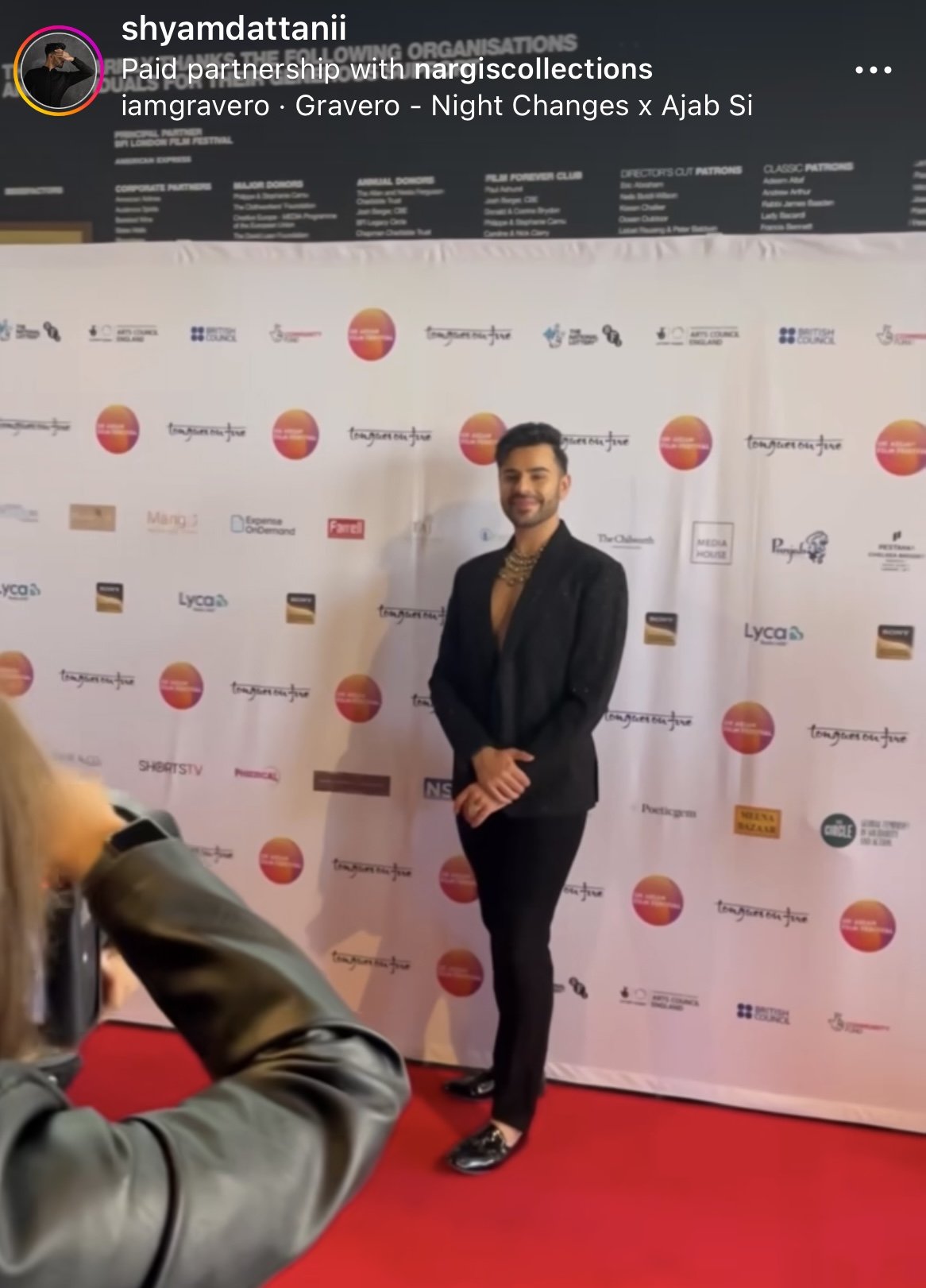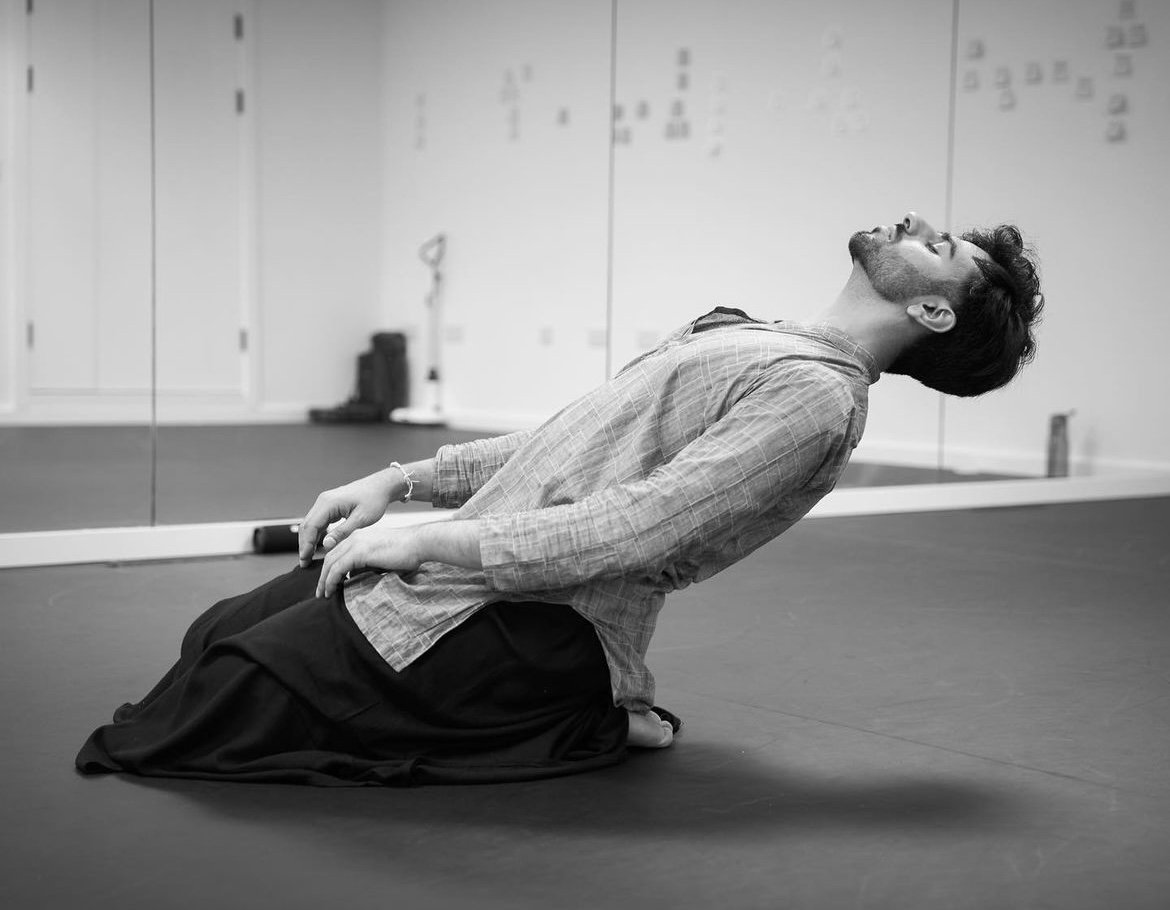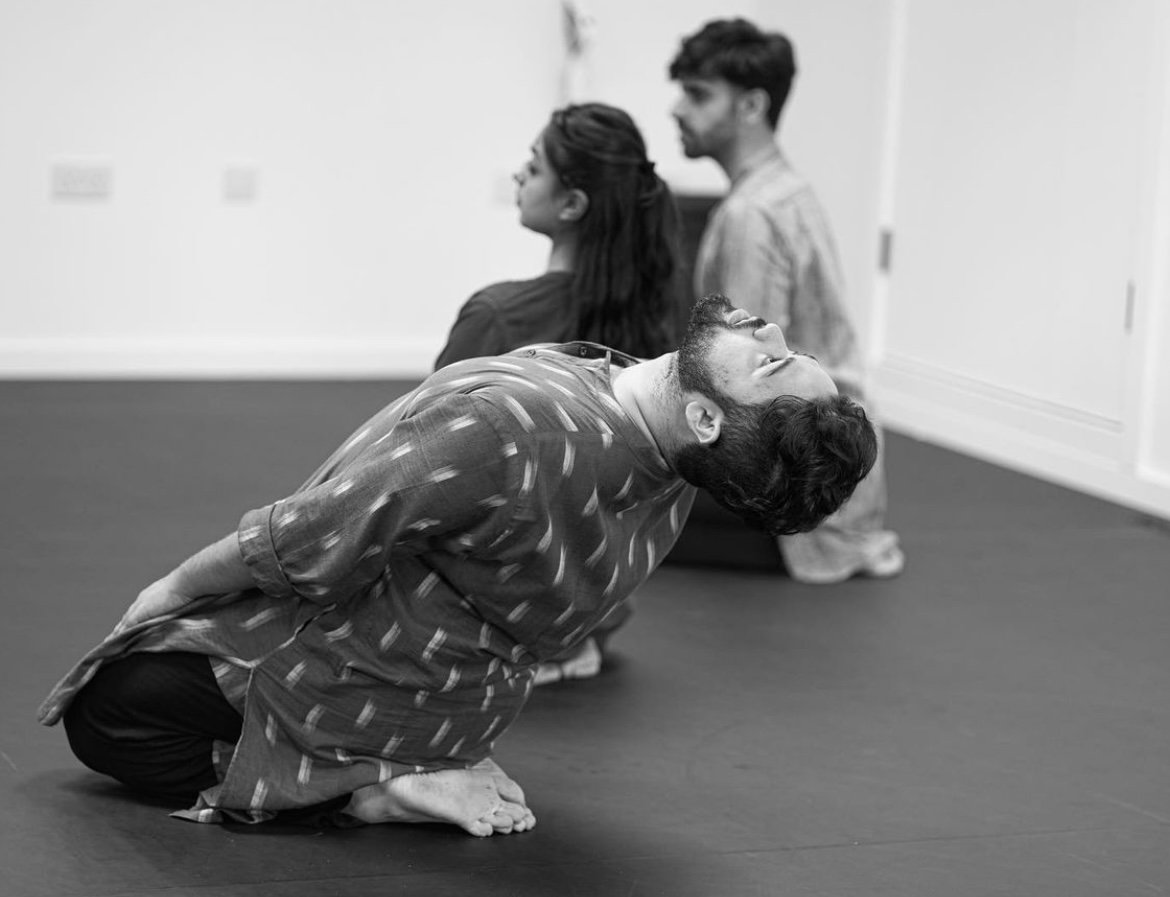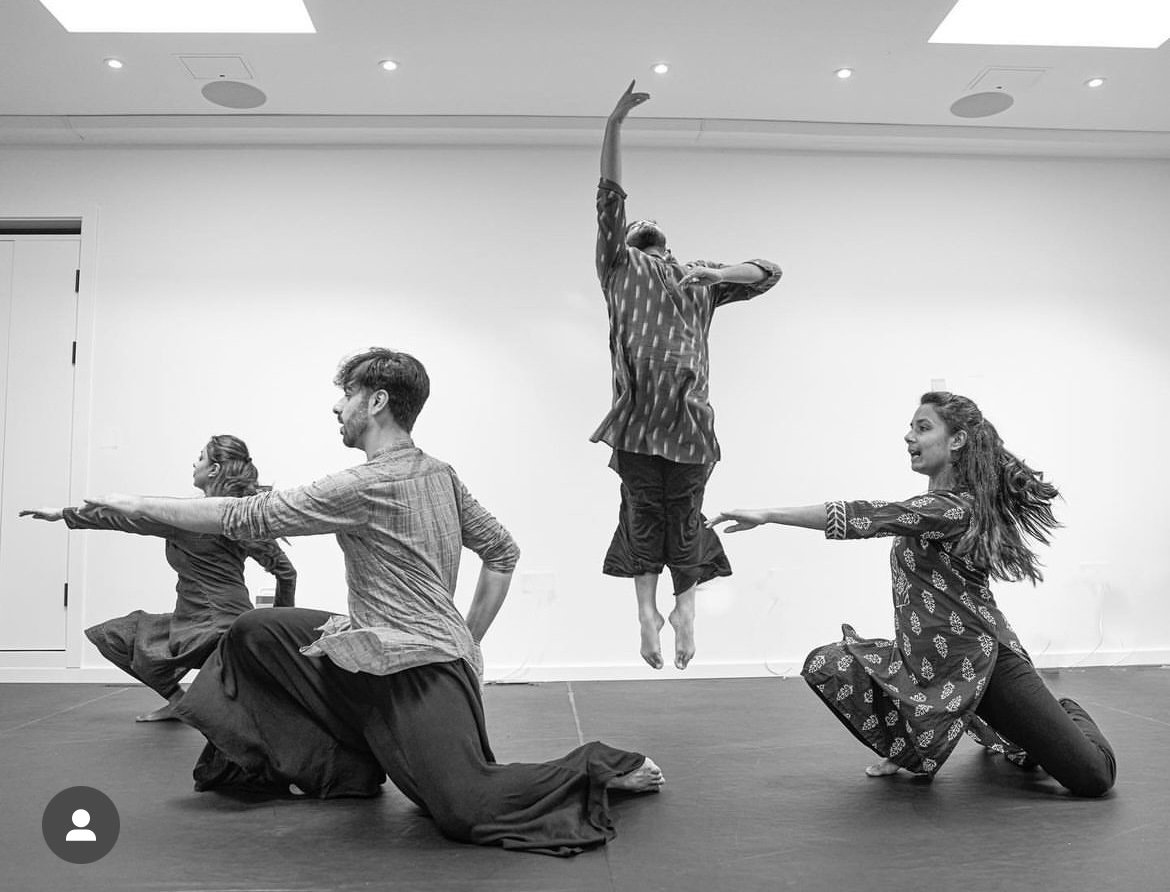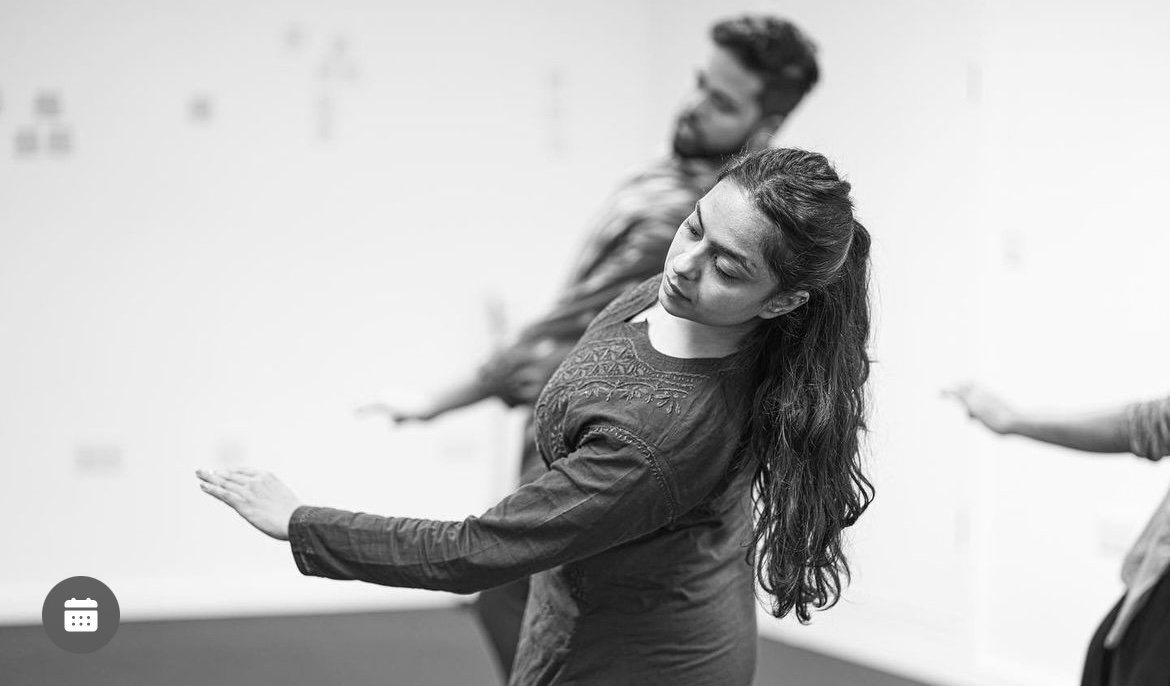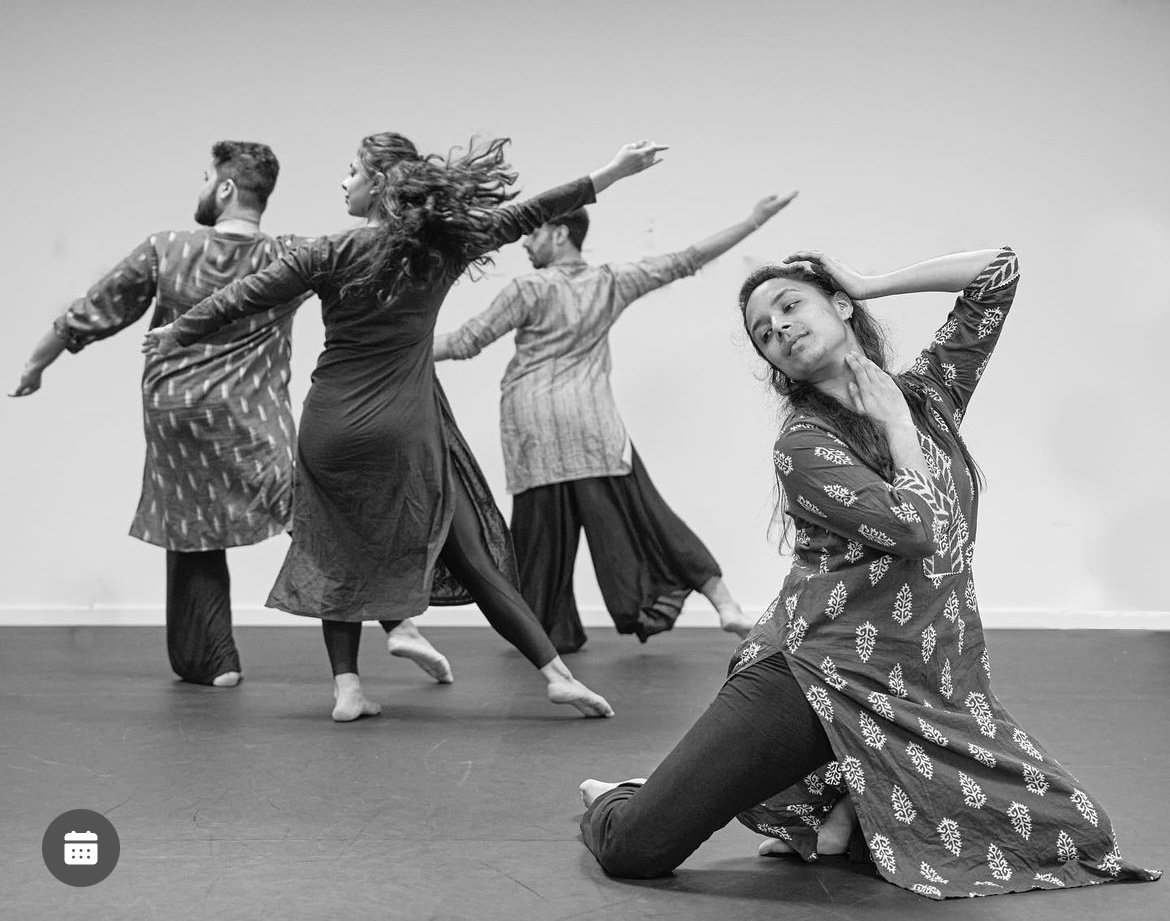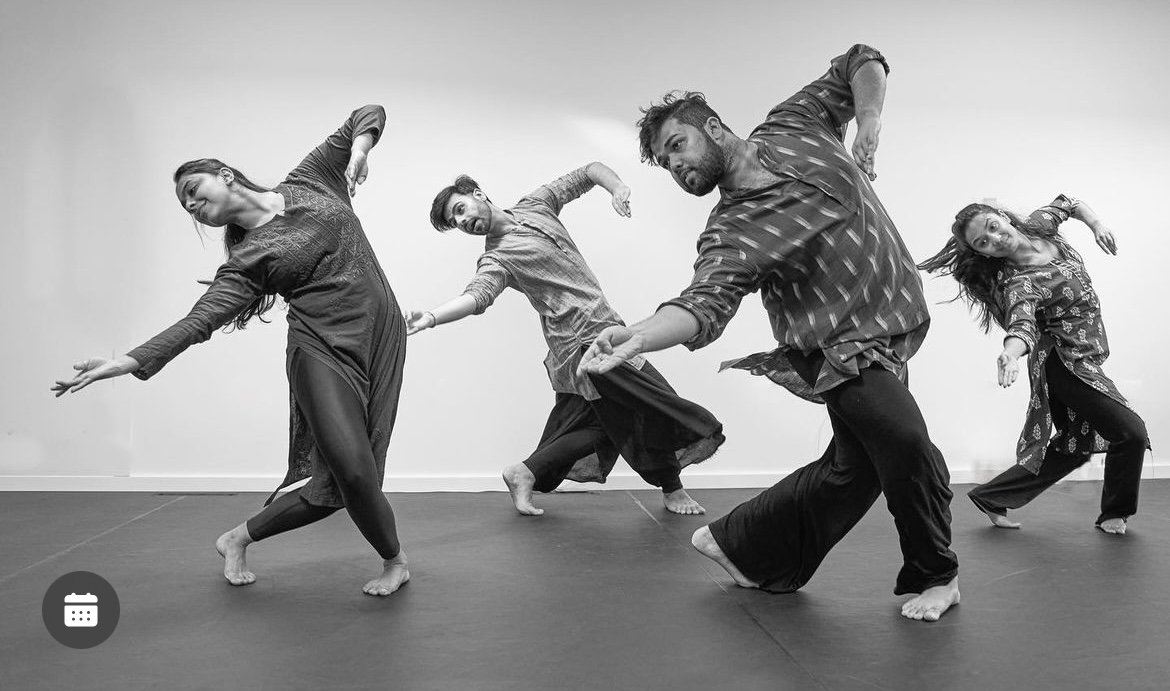The glamour and style of Shyām Dattani
Shyām Dattani - a young, queer, and consciously glamorous British practitioner of the Kathak genre of Indian classical dance - has a real following, a following that he is artist enough not to indulge. On Wednesday 7 June, he was the third of three dance artists presenting work at The Place Theatre, as part of its Resolution season. His “Dvihīna” was nothing like the evening’s first or second offerings; it alone was grounded in technical rigour. The evening’s other offerings had been well received, but, as soon as his “Dvihīna” began, it was evident that he, it, and his three co-dancers were the reason most of the audience (plenty of both sexes, with a high quotient of Asians) were there. The whoops and cheers, before any dancing was evident, were worthy of a rockstar.
Yet the dark, brooding, slow, and atmospheric beginning of “Dvihīna” at once makes clear that Dattani’s work is serious, and to be taken seriously. The lighting suggests smoke in the air; the recorded music (by Bernard Schimpelsberger) uses Indian instruments and melodic lines. The four dancers are dressed alike, with bare feet and hands (none of the ankle-bells of orthodox Kathak), and long, flared sleeves. Dattani and one woman are costumed in colours that feature a stronger red, but the choreography emphasises neither male-female nor male-male couples. These are four individuals who share closely related dance material and often move in unison. There are firm geometrical formations; there’s no particular sense of social connection.
The overall structure of “Dvihīna” moves from slow to fast. Eventually, it gave Dattani’s audience the excitement it craved - it earned the ovation the audience was already longing to bestow - but not before it had made striking points about style. In the slow beginning, the dancers move with gorgeously full three-dimensionality that handsomely shows the changing angles of the body, between floor-recumbent and kneeling positions. They might be in sleep, with eyes apparently closed, but they’re never entirely still. In long phrases, they keep aspiring to vertical stance without reaching it, like plants struggling to break through soil to the light. Amid the phrases, each dancer, while kneeling, sometimes points a feet downward and plants it vertically on the floor, almost as if considering how much weight that pointed foot might bear.
This doesn’t become an essay in pointwork, however. When the dancers finally do stand and move upright, their eyes now plainly open, they use the full texture of the sole of the foot. The textured attack with which every dancer slaps the full surface of the sole onto the floor is a sure, loud, percussive thrill, again and again. (I’ve heard Indian dancers in India whose feet reach the floor less firmly.) And it’s with footwork, moving in metric patterns, that “Dvihīna” first shows its capacity to excite the audience with speed.
The three other dancers - Anjali Tanna, Meera Patel, and Tanveer Alam - all register individually, even when dancing in unison. Each presents his or her face to the light distinctively; none of them seems cowed by Dattani, even though he’s certainly the company’s definitive stylist. Alam looks happily innocent, warm, assertive; Tanna, the most demure, gradually reveals a certain impressive resolve; Patel, facially lovely, projects both force and calm.
It’s with Dattani that you first and best see Kathak’s famous skill in fast turns; and it’s he, when all four turn on the same beat, who seems to start last and finish first, brilliantly establishing a point of stillness amid the speed. The same polish is evident when he crosses the stage in a series of turns. Even while he’s covering space fast, there are tiny moments of punctuating stillness.
When he outstretches a hand, palm down and fingers together, he holds it in the air not just as a gesture but as a handsome work of sculpture. The hand from wrist to fingertips makes a single, powerfully spatial shape, directed horizontally much as those feet, earlier, had been held vertically. The hand is charged with the power of the whole arm and body and stance. Dattani, like his co-dancers, has force without tension; amid the gesture, the line of the elbow and neck has a quality of repose. He’s a star, but his is a stardom rewardingly based in rigorous technique and focus.
“Dvihīna” comes with a politically correct programme note, assuring us that it “seeks to question the innately gendered movement in the form and the cis-heteronormative lens through which Kathak is taught, performed, and viewed in the diaspora, by queering the ideas of Tāndav (masculine or vigorous) and Lāsya (feminine or graceful) in the abstract movement practice.” But “Dvihīna” is much less dull than that chunk of prose suggests. Kathak practitioners may be more struck than I am by how “Dvihīna” levels the differences between masculine and feminine norms; although I’ve watched Kathak - sporadically, not frequently - over thirty-four years in three countries, “Dvihīna” seems so organic, so much itself, that I don’t notice any sexual/gender agenda in it. You can’t miss that these four people are modern, purposeful, motivated, equal; they never seem inhibited by tradition or orthodoxy, but they also don’t seem to be defying convention.
Dattani, though a young man, has been dancing for twenty-three years; he’s been a professional since 2016. If you follow him on social media - I enjoy doing so - you can’t miss the consciousness he projects of his own glamour. I can’t help hoping his overtly queer persona is causing shock waves amid the more socially conservative Kathak circles, but really he’s far too serious to be shocking. On Instagram, he’s fond of posting selfies that make him seem narcissistically moody. In his stage dancing, you can feel flashes of that narcissism - he presents both profile and full face to the audience with an air of knowing how to make an effect - but only fleetingly. He’s a real artist, whom I’ve watched live and on line. In “Dvihīna”, he makes a Kathak style of his own. And his chief limitation is that he’s over-concerned with stylishness. Everything here is done gorgeously, but that opening lasts too long, the overall crescendo structure is conventional (once we sense it’s likely to speed up, it carries on speeding up), and the attentiveness to beautiful effects is more striking than any urgency of expression. You can’t help wanting Dattani either to show more fire in his belly or to show the more traditional Indian subordination to the sublime. Dattani has ego, flair, and skill: now you want him to say more about life and the world, preferably in a full-evening programme.
This triple bill was part of the thirtieth anniversary season of Resolution, which is advertised as “The Festival of New Choreography” at The Place. Remembering Resolution’s early days in the 1990s, I was glad to see it still in action. (And remembering that my first views of Kathak were at The Place in 1989, I was glad to see Dattani there.) The first two offerings on the programme, Hebe Salmon’s “Giselle, this time it’s about me” and Ellen Finlay’s “No Messing”, were both harmless, woefully immature, and alarmingly undeveloped in terms of actual dance. Feminist updates of “Giselle” are far from new; it’s over forty years since Jacky Lansley made an impression on the British postmodern scene with “I, Giselle”. Finlay’s “No Messing” is about a pair of Irish twins, an inseparable brother and sister, that gets sidetracked onto the issue of the sister wearing a kilt. Both pieces are clear and slightly interesting as sociology, with lots of spoken words. As dance theatre, they’re not of professional level; they’re dismayingly underdeveloped in terms of movement.
1: Shyam Dattani, post on Instagram
2: Shyam Dattani, post on Instagram
3: Instagram advertisement for Dattani’s “Dvihīna”. In performance, the four dancers wore different costumes.
4: Shyam Dattani, in rehearsal for “Dvihīna”
5: Tanveer Alam, foreground
6: Tamveer Alam, jumping; Meera Patel and Shyam Dattani, kneeling left; Anjali Tanna, kneeling right.
Whatever it is, the way you tell your story online can make all the difference.
7: Meera Patel, foreground
8: Anjali Tanna, kneeling right
9: “Dvihīna” in rehearsal. Left to right: Anjali Tanna, Shyam Dattani, Tanveer Alam, Meera Patel.
10: “Dvihīna” in rehearsal. Left to right: Tanveer Alam, Anjali Tanna, Shyam Dattani, Meera Patel.

